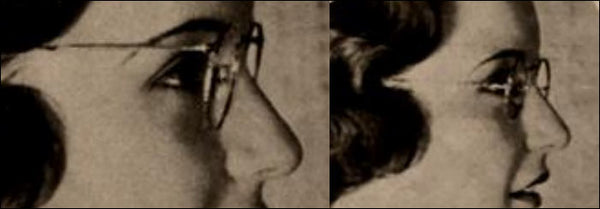The Evolution of P3 Eyeglass Frames
Share
Before the 1930s, most eyeglasses were round, oval or rectangular shaped. But since then, thanks in part to World War II, P3 frames have become one of the most popular frames styles in the world.
The "P" in P3 is for Pantoscopic, and refers to the angle or tilt of the bottom of the frame rims towards the eye. This inward tilt allows for more precise and accurate vision correction, allows the wearer to rotate the eyes from distance to reading without having difficulty, and even cuts down on lens glare. The "3" refers to the 3mm difference between the height and the width of the lenses in the original versions of these frame, and which gives them their oblong shape.

Early 1930s ad showing P3 temple hinge alignment (left) compared to contemporary eyewear hinges (right).
The P3 shape was first introduced in the early 1930s. Unlike previous round rimmed frames which had temple hinges at their midpoint, P3s allowed for the temple hinges to be attached in the upper 1/4 of the rim, thus raising the temple above the vision line and also allowing the eyes of the wearer to be seen from the side.

World War II era government issue P3 eye frames.
Given the optical advantages of P3s, the US military adopted the shape as standard government issue for soldiers who needed vision correction. Though the rugged GI P3s were made of metal and had wrap-around temples to keep them in place during combat, after WWII tortoise shell and horn rim version became popular among returning GIs and civilians, with standard temples.
Focuser's P3 shaped frames include:

